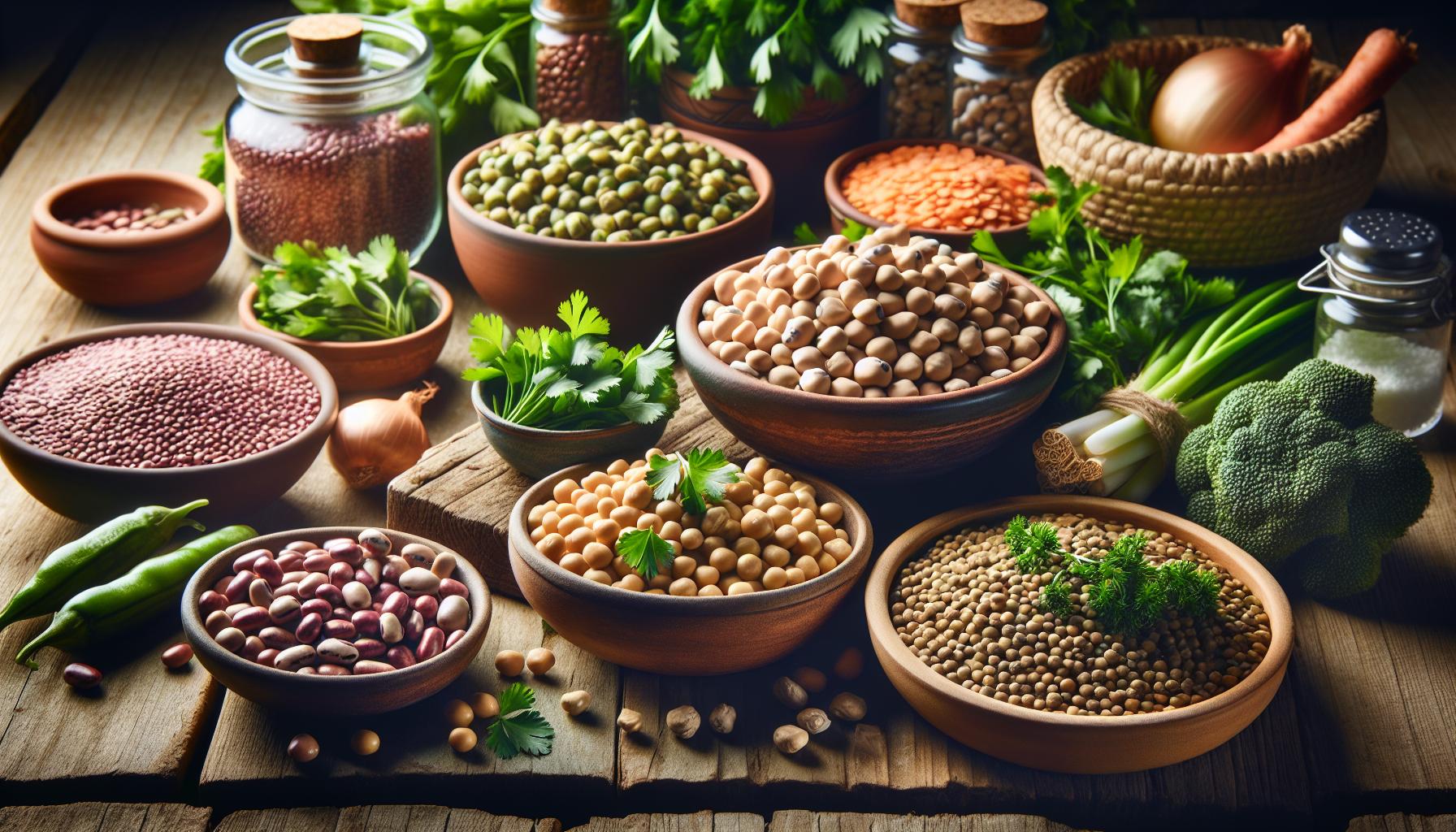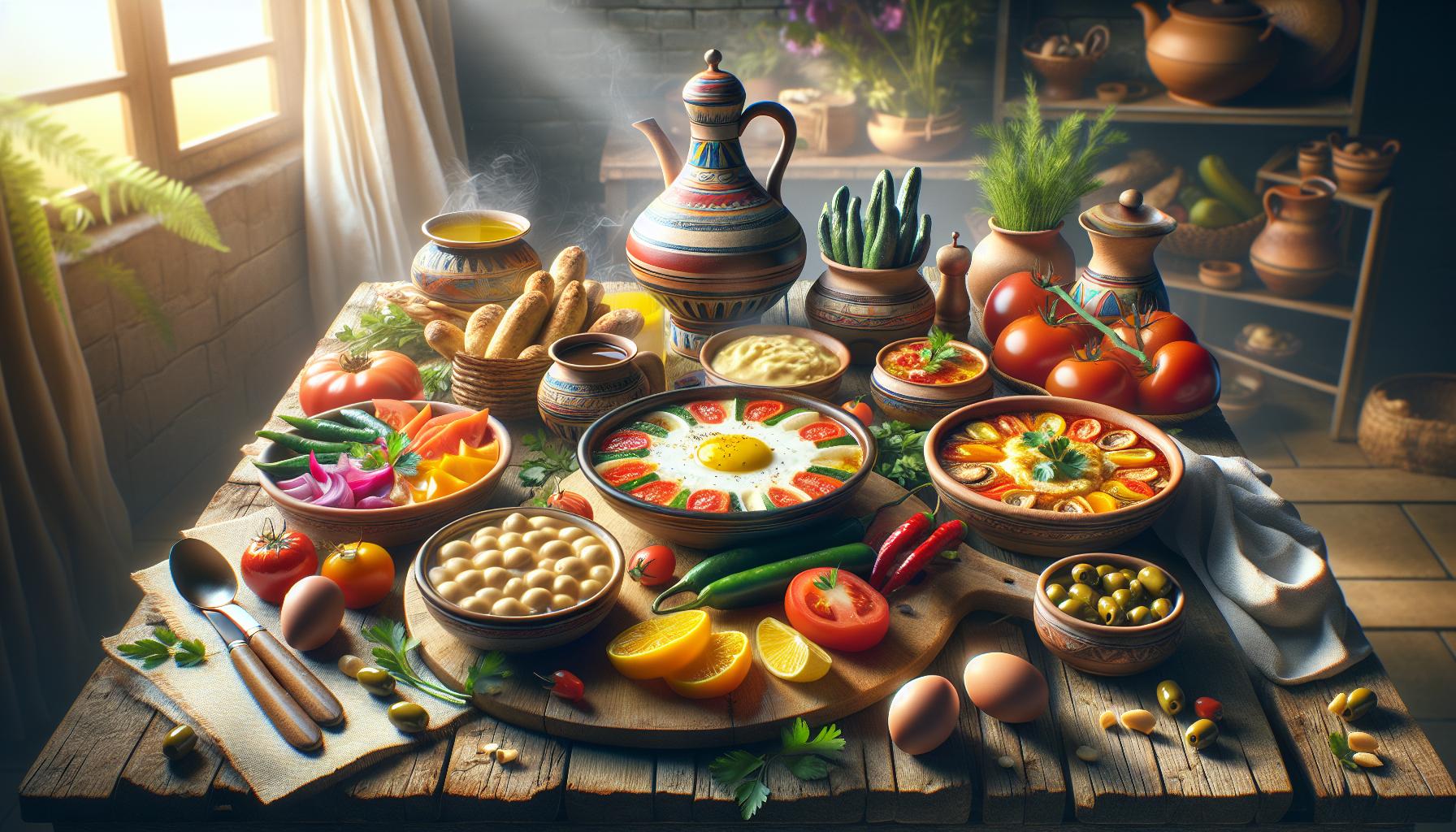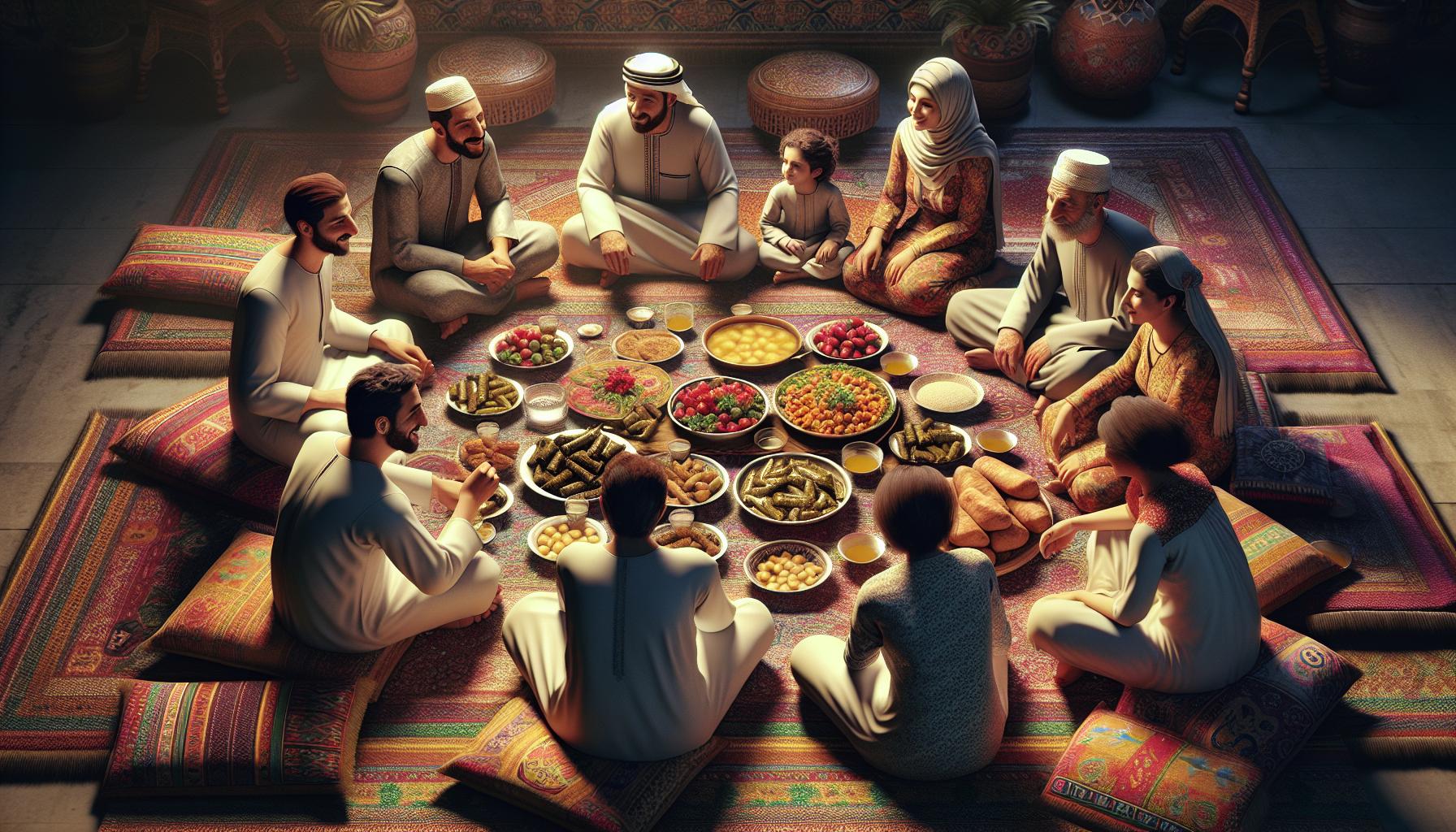Egypt food culture tells a delicious story that’s 5,000 years in the making. From the bustling streets of Cairo to the tranquil banks of the Nile, every dish carries the legacy of ancient pharaohs mixed with modern Mediterranean flair. The aromatic blend of cumin, coriander and cardamom wafting through local markets isn’t just about food – it’s a cultural celebration that brings families and communities together.
Egypt food culture revolves around generous hospitality where sharing meals isn’t just encouraged – it’s practically mandatory. Whether it’s a steaming plate of koshari (Egypt’s beloved street food) or a festive feast of stuffed pigeons, the country’s culinary traditions reflect its rich history as the crossroads of civilizations. Modern Egyptian tables still honor age-old customs while embracing contemporary tastes, creating a unique food experience that’s both timeless and evolving.
Egypt Food Culture
Egypt food culture showcases over 5,000 years of culinary evolution, blending ancient traditions with Mediterranean influences. The diverse flavors reflect the country’s rich historical tapestry from pharaonic times to modern-day practices.
Ancient Egyptian Food Heritage
Archaeological evidence reveals ancient Egyptians consumed a diet centered around bread, beer, onions, garlic figs. Hieroglyphic records from 3100 BCE document bread-making techniques using barley flour fermented in clay ovens. Farmers cultivated crops along the Nile River’s fertile banks, producing wheat, legumes, dates while fishermen harvested tilapia perch. The nobility enjoyed honey-sweetened desserts preserved fruits while workers sustained themselves with flatbreads lentil stews. Many cooking methods from this era persist in modern Egyptian kitchens, including clay-oven baking slow-cooking techniques.
Islamic and Modern Influences
The Arab conquest in 642 CE introduced new ingredients spices that transformed Egyptian cuisine. Rice became a dietary staple, leading to signature dishes like mahshi molokhia. Ottoman rule brought Turkish culinary elements, including shawarma kebab preparations. The Mediterranean influence added olive oil seafood combinations to coastal recipes. French colonialism contributed pastry-making techniques, evident in contemporary Egyptian desserts like Om Ali baklava. Today’s Egyptian kitchen incorporates these historical influences while maintaining traditional cooking methods, creating dishes like koshari that blend multiple cultural elements into uniquely Egyptian creations.
Essential Ingredients in Egyptian Cooking

Egypt food culture relies on specific ingredients that form the foundation of traditional dishes. These core elements reflect the country’s agricultural heritage along the Nile Valley and its historical trade connections.
Beans and Legumes
Fava beans (ful medames) serve as Egypt’s primary protein source, appearing in breakfast dishes throughout the country. Lentils feature prominently in koshari, a national dish combining rice, pasta and tomato sauce. Black-eyed peas add texture to soups while chickpeas transform into creamy hummus or falafel (ta’meya). Egyptian cooks use dried fava beans to create bessara, a hearty dip seasoned with olive oil, lemon juice and garlic. Fresh green fava beans appear in seasonal stews during spring months.
Herbs and Spices
Egyptian kitchens incorporate distinctive herbs and spices that create signature flavor profiles. Fresh parsley, cilantro and dill enhance seafood dishes along the Mediterranean coast. Cumin adds earthiness to fava beans while coriander brings warmth to meat dishes. Dried mint pairs with molokhia leaf stews. Bay leaves, cardamom and cinnamon infuse rice dishes with aromatic notes. Traditional dukkah spice blend combines sesame seeds, coriander, cumin and hazelnuts. Garlic and onions create savory bases for most Egyptian dishes.
Popular Egyptian Dishes and Meals

Egypt food culture features distinctive dishes that blend ancient traditions with modern influences. Local ingredients combine with time-honored cooking methods to create memorable meals served throughout the day.
Breakfast Traditions
Traditional Egyptian breakfast centers around ful medames, a hearty dish of seasoned fava beans topped with olive oil, lemon juice, cumin & chopped parsley. Ta’meya (Egyptian falafel) made from fava beans offers a crispy breakfast option served in fresh baladi bread. Eggs prepared as shakshouka simmer in a spiced tomato sauce with bell peppers & onions. Street vendors sell hot feteer, a flaky pastry stuffed with cheese, meat or sugar. Families gather for weekend breakfast spreads featuring fool, ta’meya, fried eggs, white cheese, olives & fresh vegetables.
Main Course Specialties
Koshari stands as Egypt’s national dish, combining rice, macaroni, lentils & chickpeas topped with spiced tomato sauce & crispy onions. Molokhia features minced jute leaves cooked with garlic & coriander, served over rice with chicken or rabbit. Stuffed grape leaves (wara’ enab) contain seasoned rice & herbs wrapped in tender vine leaves. Grilled pigeon (hamam mahshi) comes stuffed with cracked wheat & spices. Bamia presents tender okra in a rich tomato sauce with lamb. Fresh-caught Nile fish like tilapia gets grilled or fried & served with tahini sauce.
Egyptian Dining Customs and Etiquette

Egyptian dining customs reflect centuries-old traditions centered around family gatherings and gracious hospitality. These practices emphasize respect, generosity and the social bonds formed through sharing meals.
Family Dining Traditions
Egyptian families gather for meals on floor cushions or at low tables, creating an intimate dining atmosphere. Children learn proper eating etiquette from elders who model using the right hand for eating and keeping the left hand in their lap. Meals start when the eldest family member begins eating, signaling others to join. Family members share food from communal dishes placed in the center of the table. Evening meals feature multiple courses served simultaneously, allowing diners to sample various dishes throughout the meal. Traditional practices include saying “Bismillah” (in the name of God) before eating and “Al-ḥamdu lillāh” (praise be to God) after finishing.
Hospitality Culture
Egyptian hosts consider serving guests an honor and opportunity to demonstrate generosity. Visitors receive immediate offerings of drinks like mint tea or Turkish coffee upon arrival. Hosts present abundant portions, often serving 25-30% more food than needed to ensure guests feel satisfied. Multiple refusal attempts precede accepting food or drinks, as immediate acceptance appears eager or impolite. Guests express appreciation by complimenting the food and leaving a small portion on their plates to show they’re full. Traditional greetings include “Sahtein” (double health) before meals and heartfelt thanks afterward. Local custom dictates that no one leaves a gathering hungry, regardless of the time or circumstance.
Religious and Festival Food Traditions
Egypt food culture intertwine deeply with religious observances and festival celebrations, creating distinct culinary practices that mark special occasions throughout the year. These customs reflect both Islamic influences and ancient cultural heritage.
Ramadan Food Culture
The holy month of Ramadan transforms Egyptian dining patterns with specific meal times and traditional dishes. Families break their fast at sunset with dates and apricot juice, followed by hearty soups like shorbet ads (lentil soup). The main iftar meal features mahshi (stuffed vegetables), sambousek (meat-filled pastries) and konafa (sweet pastry with nuts). Pre-dawn suhoor meals include ful medames, eggs and yogurt to provide sustained energy throughout the fasting day. Street vendors set up tables offering traditional drinks like karkade (hibiscus tea) and tamr hindi (tamarind juice).
Holiday Celebrations
Eid al-Fitr marks the end of Ramadan with kahk (butter cookies filled with nuts) and ghorayebah (shortbread cookies) shared between families. During Eid al-Adha, Egyptians prepare fatta (rice and bread topped with meat in vinegar sauce) and distribute portions to neighbors. Coptic Christmas celebrations feature special dishes like roz be laban (rice pudding) and bouri (grilled mullet). Sham el-Nessim, an ancient spring festival, centers around feseekh (fermented mullet), colored eggs and green onions eaten outdoors. Traditional holiday sweets include zalabia (fried dough with syrup) and umm ali (bread pudding with nuts).
Street Food Culture in Modern Egypt
Egyptian street food stands line busy urban corners from Cairo to Alexandria, offering quick affordable meals that capture local flavors. Food carts serve ta’meya (Egyptian falafel) made from fava beans rather than chickpeas, creating a distinctive green interior. Mobile vendors sell ful medames from copper pots, ladling the seasoned fava beans into fresh baladi bread.
Popular street snacks include:
- Hawawshi: Spiced minced meat stuffed in baladi bread
- Shawarma: Sliced meat wrapped in pita with tahini sauce
- Koshary: A mix of rice, pasta, lentils topped with tomato sauce
- Mahshi: Stuffed grape leaves sold by the piece
- Roasted sweet potato carts: Fresh hot batata served in paper cones
Street food pricing in major Egyptian cities:
| Item | Average Price (EGP) |
|---|---|
| Ta’meya Sandwich | 5-10 |
| Hawawshi | 15-25 |
| Koshary Bowl | 20-35 |
| Shawarma | 25-40 |
| Sweet Potato | 5-15 |
Food cart culture thrives during evening hours when temperatures cool. Local neighborhoods feature signature street food specialties passed down through generations of vendors. Modern food trucks park near universities offering fusion dishes that blend Egyptian flavors with international cuisine.
Street food safety standards follow municipal regulations with routine health inspections. Vendors display their permits prominently while maintaining clean preparation areas. Fresh ingredients arrive daily from local markets ensuring quality meals at accessible prices.
Regional Food Variations Across Egypt
Egypt food culture varies distinctly across different regions, reflecting local ingredients and cultural influences. Each area boasts unique specialties that showcase regional agricultural products and cooking methods.
Alexandria and the Mediterranean Coast:
- Fresh seafood dishes like sayadeya (spiced fish with rice)
- Grilled sardines with cumin
- Mediterranean-style mezze platters featuring tahini dips
- Local variations of Greek-influenced dishes
Delta Region:
- Roz bel khalta (mixed rice with nuts)
- Fermented fish dishes like feseekh
- Special preparations of bouri (mullet fish)
- Unique bread varieties using local grain blends
Upper Egypt (Sa’eed):
- Sun-dried melokhia
- Bamya (okra) with distinctive spice blends
- Local sausages called os-ban
- Date-based desserts reflecting abundant palm groves
- Bedouin bread (fatir)
- Zarb (underground oven-cooked meat)
- Camel meat specialties
- Rock salt-cured fish
- Fresh river fish preparations
- Distinctive stuffed pigeon recipes
- Local variations of mahshi (stuffed vegetables)
- Unique molasses-based sweets
| Region | Signature Ingredients | Notable Dishes |
|---|---|---|
| Alexandria | Seafood, Mediterranean herbs | Sayadeya, Grilled sardines |
| Delta | Rice, Fish, Nuts | Roz bel khalta, Feseekh |
| Upper Egypt | Melokhia, Dates | Sun-dried melokhia, Os-ban |
| Sinai | Camel meat, Rock salt | Zarb, Fatir |
| Nile Valley | River fish, Pigeons | Stuffed pigeon, Mahshi |
Remarkable Culinary Heritage
Egypt food culture stands as a living testament to over five millennia of history blending ancient wisdom with modern innovation. From bustling street food vendors to intimate family gatherings the cuisine reflects deep-rooted traditions of hospitality and communal dining. The interplay of regional variations religious customs and seasonal celebrations creates a rich tapestry that continues to evolve while honoring its past.
This remarkable culinary heritage thrives today as Egyptians preserve traditional cooking methods while embracing contemporary influences. Their food culture remains a powerful expression of identity community and hospitality that welcomes all to experience its diverse flavors and time-honored traditions.



